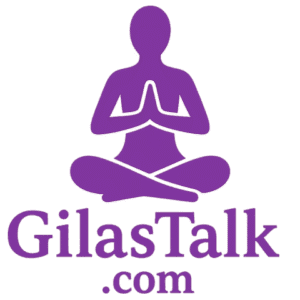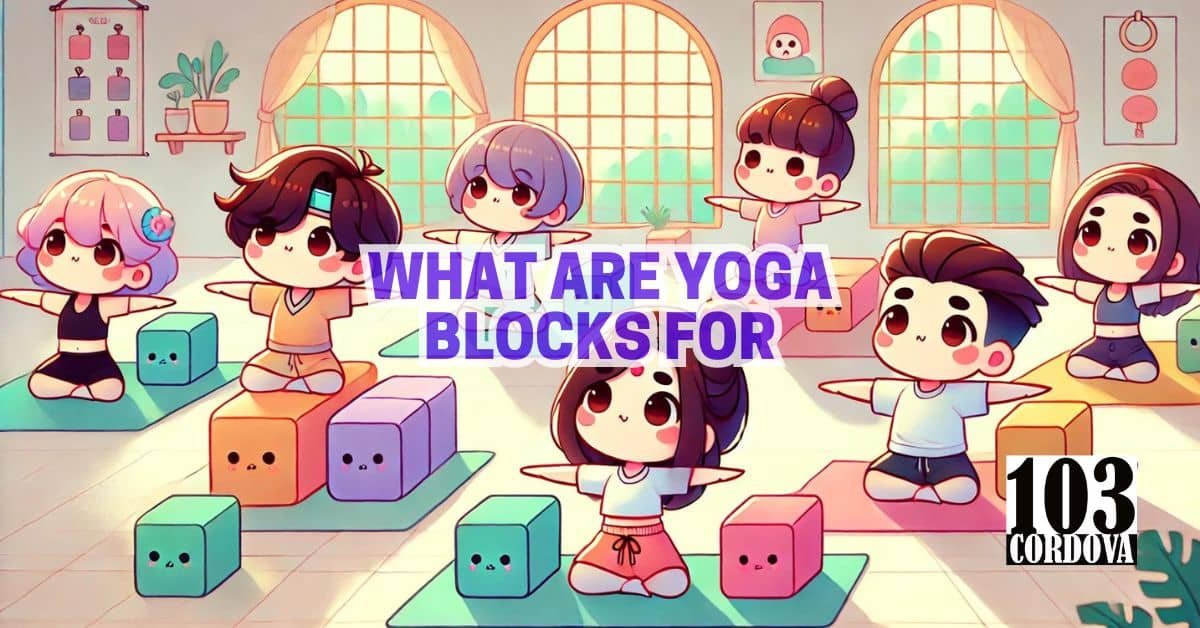Yoga blocks are versatile tools designed to enhance and support your practice.
They provide stability and help practitioners achieve better alignment, making various poses more accessible.
Whether you are new to yoga or have years of experience, blocks can deepen your stretches and improve form.
They serve as a bridge between your current flexibility and your desired level, offering gentle assistance.
With the right use, yoga blocks can help create a more balanced, comfortable, and rewarding yoga experience.
1. Understanding Yoga Blocks: Definition and Types
Yoga blocks are simple yet functional props used to support the body in different poses.
Typically made from materials like foam, cork, or wood, each type offers unique benefits depending on your needs.
Foam blocks are soft and lightweight, perfect for beginners or those seeking gentle support.
Cork blocks are firmer and provide more stability, while wooden blocks offer the most solid and durable support.
The standard size is 9″ x 6″ x 4″, but smaller or larger versions are available for specific requirements.
🧘 Unlocking the Secrets of Yoga: What Science Reveals About Its Benefits
2. Using Yoga Blocks to Improve Alignment in Poses
Proper alignment is crucial in yoga to avoid injury and maximize the benefits of each pose.
Yoga blocks act as an extension of your arms, legs, or torso, helping you achieve correct form without strain.
For instance, in poses like Trikonasana (Triangle Pose), a block under your lower hand can prevent overreaching, ensuring your spine stays aligned.
This extra support helps you gradually build strength and flexibility without sacrificing technique.
As time passes, the use of blocks will promote a better understanding of your body’s natural alignment.
🧘 Yoga Body vs. Gym Body: Finding Your Perfect Fit for Fitness
3. Enhancing Flexibility with the Help of Yoga Blocks
Yoga blocks are valuable tools for increasing flexibility, especially if certain poses feel out of reach.
They provide elevation or an extended surface to rest on, making it easier to ease into deep stretches.
In a seated forward fold, a block placed under your hands allows you to stretch comfortably while maintaining good posture.
As you become more flexible, you can adjust the height or positioning of the block to challenge yourself further.
This gradual process helps avoid overstretching and encourages safe, steady progress.
🧘 The Origins of Yoga Pants: Tracing Their Trendy Evolution Over the Years
4. Supporting Balance: How Yoga Blocks Improve Stability
Yoga blocks provide crucial support when working on poses that challenge your balance.
In standing poses like Ardha Chandrasana (Half Moon Pose), placing a block under your lower hand gives you a stable foundation to balance and prevents wobbling.
This extra stability allows you to focus on alignment and proper form rather than worrying about falling or losing balance.
Even in more advanced poses, blocks can provide the grounding needed to hold the position longer and with more confidence.
This stability helps build strength and coordination, making balancing poses less intimidating.
🧘 Creating Your Ideal Yoga Sanctuary: Tips for a Tranquil Home Practice
5. Facilitating Modifications: Making Poses More Accessible
Yoga blocks are key to modifying poses to match your current flexibility and strength level, making them accessible for all practitioners.
They can reduce the range of motion needed for certain poses, helping you maintain correct form without strain.
As an example, in Parivrtta Parsvakonasana (Revolved Side Angle Pose), a block can be placed under your hand to bring the ground closer, allowing you to twist more comfortably.
This way, you can still engage with the full benefits of the pose, even if your flexibility is limited.
By offering these modifications, yoga blocks empower everyone to participate fully in their practice.
🧘 Meet the Father of Yoga: Discover His Lasting Impact on Mindfulness and Meditation
6. Encouraging Proper Breathing with Yoga Blocks
Using yoga blocks can enhance your breathwork by improving posture and alignment, especially in seated and reclining poses.
By elevating your hips in seated positions like Sukhasana (easy pose), blocks help align the spine, allowing your chest and diaphragm to expand more fully.
This encourages deeper, more effective breathing, which is crucial in yoga for relaxation and focus.
In reclining poses, a block under the back can gently open the chest, promoting better airflow.
This alignment and openness not only improve your breathing but also help reduce tension and promote calmness during your practice.
🧘 Avoid These Pitfalls: Common Mistakes Beginners Make in Yoga Classes
7. Creating Space and Comfort in Your Practice
Yoga blocks help create physical space in poses where the body feels compressed or restricted.
In forward folds or deep bends, they provide a surface to rest on, reducing discomfort in areas like the lower back or hamstrings.
For example, placing a block under your forehead in Child’s Pose can relieve neck strain while allowing your body to relax more fully.
This extra space encourages the muscles to soften and release tension, making the practice more comfortable and enjoyable.
Whether you are sitting, lying down, or stretching, blocks can enhance both the physical and mental ease of your session.
🧘 Bump-Friendly Bliss: Safe Yoga Ball Exercises for Every Stage of Pregnancy
8. Utilizing Yoga Blocks in Restorative Yoga Sessions
Yoga blocks are essential props in restorative yoga, where the goal is deep relaxation and gentle stretching.
In restorative poses, blocks support the body in passive positions, allowing you to relax fully without engaging your muscles.
In a supported bridge pose, placing a block under your sacrum provides gentle elevation while relieving pressure on your lower back.
This passive support encourages the body to release tension, making it easier to rest and restore.
Blocks help you maintain these restorative poses for longer periods without discomfort, enhancing the therapeutic benefits of your practice.
🧘 Dressing for Success: Essential Tips on What to Wear for Your First Yoga Class
9. Building Strength: Incorporating Blocks into Your Routine
Yoga blocks are not just for flexibility and support—they can also be used to build strength by increasing the intensity of certain poses.
In plank variations or arm balances, placing your hands on blocks can elevate your position, making it more challenging and engaging your muscles more deeply.
They also add resistance in poses like chair pose, where you can hold a block between your thighs to activate your inner leg muscles.
By incorporating blocks into these strengthening exercises, you challenge your body to build muscle while maintaining proper alignment.
Over time, this leads to improved overall strength and endurance in your practice.
🧘 Chair Yoga Uncovered: Embrace the Benefits of This Inclusive Practice
10. The Versatility of Yoga Blocks Across Different Yoga Styles
Yoga blocks are incredibly versatile and can be used across a wide range of yoga styles, from fast-paced Vinyasa to calming Yin or restorative sessions.
In Vinyasa flow, they offer support during transitions between poses, helping maintain alignment and balance.
In slower styles like Yin or Hatha yoga, blocks provide the comfort and support needed to hold poses for longer periods.
Whether you are seeking strength, flexibility, or relaxation, blocks can adapt to the unique demands of each style.
Their adaptability makes them a valuable tool for practitioners of all levels and preferences.
🧘 What Is Yoga Good For? Delving into the Mindfulness and Meditation Benefits
💡 Conclusion
Incorporating yoga blocks into your practice can enhance every aspect of your yoga journey.
They support proper alignment, increase flexibility, build strength, and make difficult poses more accessible.
With their versatility and ease of use, yoga blocks help practitioners of all levels find balance and comfort.
By using blocks, you can deepen your connection to each pose and ensure a safer, more enjoyable practice.
Ultimately, they empower you to practice yoga with greater confidence, control, and awareness.
🧘 Our Services
Join our yoga classes designed for all ages at 103 Cordova Tower, Marquinton Residences, Cirma Street, Sto. Nino, Marikina City.
Whether you’re a beginner or experienced, our sessions cater to every skill level, helping you build strength, flexibility, and balance.
Reach out to us at 09176225780 or connect via Facebook or our site’s contact form for inquiries and scheduling.
Our supportive instructors will guide you through each session in a welcoming and relaxing environment.
Start your journey to better health and wellness with us today!

